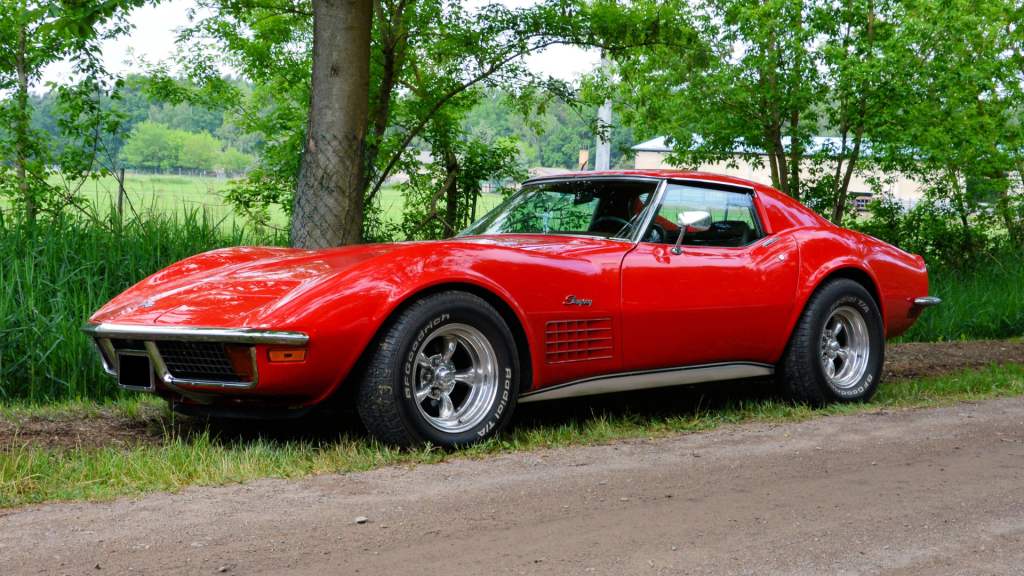
The Corvette C3, the third generation of Chevrolet’s iconic Corvette sports car, was produced from 1968 to 1982. Known for its distinct, sleek design and advanced engineering for its time, the C3 is one of the most recognizable Corvette models and remains a favorite among car enthusiasts. Here’s an overview of its history:
Origins and Introduction (1968)
- The C3 was inspired by the Mako Shark II concept car designed by Larry Shinoda under the direction of Bill Mitchell.
- It marked a significant departure from the previous C2 generation, introducing a more aggressive, curvaceous design with a long hood and a “Coke bottle” profile.
- Chevrolet retained the Stingray name (spelled as one word starting in 1969) to emphasize continuity with the C2.
Design and Features
- Exterior:
- Flip-up headlights became a defining feature, blending aerodynamics with style.
- Removable T-tops and a rear-window option on coupes provided an open-air experience similar to convertibles.
- Interior:
- A driver-focused cockpit with round dials and aircraft-style controls.
- Early models had simpler interiors, which evolved over the years to incorporate more luxurious materials.
- Chassis:
- It inherited the chassis of the C2, though with updated suspension for improved handling and comfort.
Performance and Engine Options
- The C3 offered a wide range of V8 engines over its lifetime, with displacements ranging from 327 cubic inches (5.4 L) to 454 cubic inches (7.4 L).
- High-performance options, like the LT-1, ZR-1, and L88, cemented the C3’s reputation as a muscle car.
- Over time, power output varied due to stricter emissions regulations in the 1970s, peaking in the early years and declining later.
Key Milestones and Updates
- 1968-1972 (Early C3 Models):
- These were the high-performance years, with big-block engines like the 427 cubic-inch L88 producing over 500 horsepower.
- Chrome bumpers adorned both the front and rear, a design element that would change after 1972.
- 1973-1977 (Mid-Generation Changes):
- A major facelift in 1973 introduced a polyurethane front bumper, replacing the chrome to meet new safety standards. Rear chrome bumpers remained until 1974.
- 1975 marked the last year for the C3 convertible until the C4 generation.
- 1978 (25th Anniversary Edition):
- The C3 received a significant redesign with a fastback rear window, improving aerodynamics and cargo space.
- Chevrolet introduced a Silver Anniversary Edition with two-tone paint and a special Indy 500 Pace Car Edition.
- 1980-1982 (Final Years):
- Weight reduction and improved aerodynamics were key focuses.
- The introduction of electronic features, such as a digital dashboard in 1982, hinted at the future direction of the Corvette.
- The C3’s production concluded in 1982, replaced by the all-new C4 Corvette in 1983.
Legacy
The C3 Corvette remains one of the longest-running Corvette generations and helped solidify the model’s reputation as an American icon. Its combination of bold styling, powerful engines, and innovation made it a cultural phenomenon in its time and a highly sought-after collector’s car today.